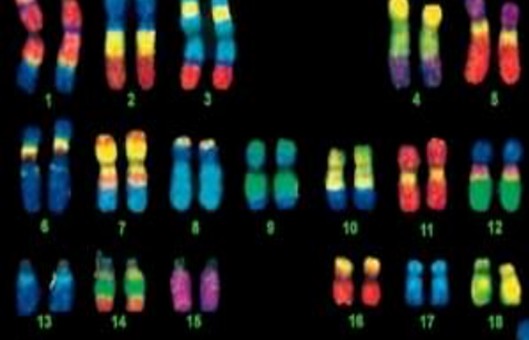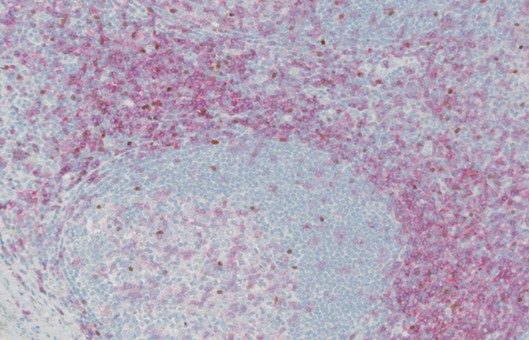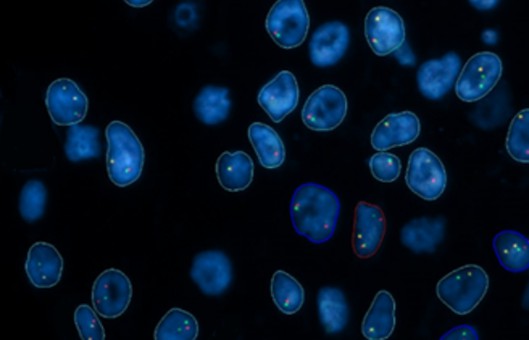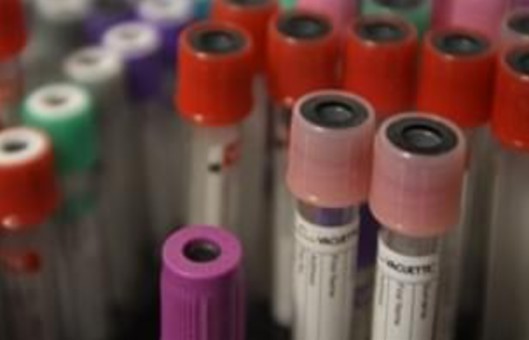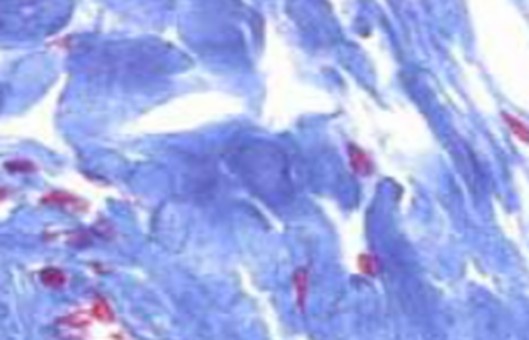ISH Protocol with Nonradioactive Probes
GUIDELINE
- In situ hybridization takes advantage of the reaction between two complementary single-stranded nucleic acid molecules. These molecules bind by means of hydrogen bonding of complementary base pairs. Hybridization performed in situ includes techniques that detect these hybrids in a cell or tissue section by cytochemistry.
- We describe a nonradioactive method for the detection of mRNAs. The biotinylated complementary oligonucleotide or cRNA probes hybridize with the cytoplasmic mRNAs and are detected by antibiotics. The reaction is amplified by a sandwich technique that provides layers of biotin and streptavidin-peroxidase. The protocol can be combined with a classical immunolabeling protocol that also detects antigens with a contrasting-color system.
METHODS
Preparation of the complementary probes
For the hybridization, we biotinylate and hybridize either cRNA probes or complementary oligonucleotide probes that are at least 30 mer long.
Prehybridization
- To aid penetration of reagents, the cells are first treated with 0.3% Triton X-100 for 15 min at room temperature. Washing twice with 0.1 M PBS, 3 min each, follows, at which point the cells are gently shaken on a side-to-side shaker.
- To further improve penetration and remove associated proteins, cells are then treated with proteinase K (1 μg/mL) for 15 min at room temperature.
- The next step involves stabilizing the cells by exposing them to 4% paraformaldehyde/0.1 M PBS for 5 min at room temperature. This is followed by washing twice with 0.1 M PBS, 3 min each, while gently shaking.
- To cover nonspecific reactive sites, the cells are treated with 0.25% acetic anhydride for 10 min while shaking.
- Treat the cells with 50% deionized formamide in 2×SSC. The incubation is initially done while shaking the tray at room temperature for 10 min and it then continues at 37°C for an additional 10 min.
Hybridization
- The cells are then placed in the hybridization solution. This is a hybridization buffer containing 10-500 ng/mL of a biotinylated oligonucleotide or cDNA probe. The cells are then incubated for 12-15 h at 37°C. The temperature of hybridization may be varied according to the melting temperature of the probe.
- The cells are first washed 3× with 4×SSC for 15 min each wash. This is done at room temperature (with gentle shaking during the last 5 min). Washing in 2×, 1×, or even 0.5×SSC.
Creative Bioarray Relevant Recommendations
- Creative Bioarray offers a wide range of ISH products and services, from ISH Probes and ISH Reagents to In Situ Hybridization (ISH) & RNAscope Service and Digital ISH Image Quantification and Statistical Analysis. Our customer service representatives are available 24 hours a day!
Detection of the biotin
- Monoclonal anti-biotin (1:30) for 30 min at 37°C. They are then washed twice with 0.05 M Tris-buffered saline for 3 min each (pH 7.6).
- Biotinylated horse anti-mouse IgG (1:100) for 10 min at room temperature. This is followed by two washes with 0.05 M Tris-buffered saline, 3 min each.
- A second layer of monoclonal anti-biotin (1:100) should be added by incubation for 30 min at 37°C. Coverslips are then washed twice with 0.05 M Tris-buffered saline, for 3 min each.
- Apply a second layer of biotinylated horse anti-mouse IgG (rat absorbed) 1:100 for 10 min at room temperature and wash twice with 0.05 M Tris-buffered saline, 3 min each.
- Add a 1:10 dilution of peroxidase-conjugated streptavidin for 5 min at room temperature. The cells are then washed twice with 0.05 M Tris-buffered saline.
NOTES
- We have controlled for interference by eliminating the complementary RNA probe from the first sequence or substituting sense probes for the antisense probes. In each case, no labeling results or it is reduced to 1-3% of the cell population. Tests of nonspecific labeling, if it occurs, can be made by substituting different antisera in the detection protocol.
- The labeling density for the mRNA (sensitivity) can be improved by adding another layer of anti-biotin and streptavidin. However, this may be at the expense of higher background. Tests of different temperatures of hybridization may show an optimal temperature that promotes labeling.
RELATED PRODUCTS & SERVICES
Reference
- Darby, Ian A. (1999). "In Situ Hybridization Protocols." (163), 29-50.
